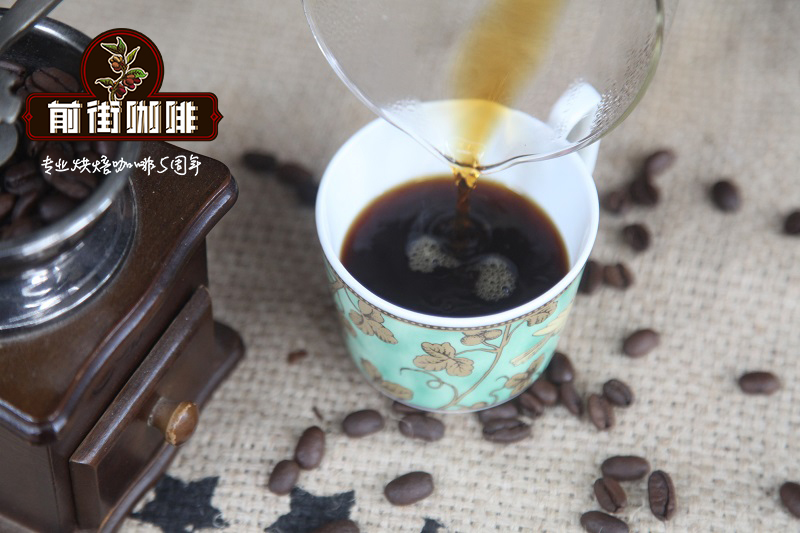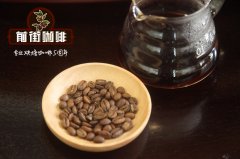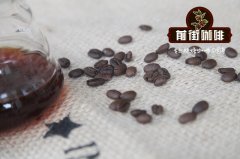Does Rosa Coffee belong to Arabica? sharing between Smart Cup and Rosa brewing parameters

Professional coffee knowledge exchange more coffee bean information please follow the coffee workshop (Wechat official account cafe_style)
Qianjie-Rose summer varieties and cooking sharing
Arabica, also known as small coffee beans, is native to Ethiopia. Arabica coffee trees mostly grow at an altitude of 1000 ℃ 2000 meters above sea level; they are hardy, and the suitable growth temperature is 15 mures and 24 meters; they need more humidity, and the annual rainfall is not less than 1500 milliliters; at the same time, they also have higher requirements for cultivation techniques. Arabica coffee tree is a large shrub with oval, dark green leaves and oval fruit. Generally, there are two slightly flattened beans with long oval on the front, narrow and curved cracks in the middle, S-shaped, and smooth arc on the back of the beans. Caffeine content is about 0.8% Rue 1.5%.
Arabica coffee began to spread around the world in the mid-1700s. Historically, most coffee is descended from Typica and Bourbon. In the mid-20th century, breeders began to introduce "infiltration" varieties resistant to "coffee leaf rust".
A very famous derivative of Arabica is Rosa. This very popular coffee variety is easily identified by the angle of the top branches and the shape of the plant, and the top branches of the rose summer species extend into the sky at 45-50 degrees. The rose summer plant is tall, with a long distance between branches, and the trunk and branches are very thin, a bit like a tin pickup.
The leaves are smooth and slender, and coffee cherries are as slender as tin pickups. The most obvious difference between Rosa and a tin pickup is that it is umbrella-shaped or flat-topped, while the tin truck is conical. The taste of ripe rose cherries is completely different from other varieties. They have citrus flavor and sweetness, as well as jasmine aromas.
The principle of the smart cup is similar to that of the French pressure pot, and it looks very similar to the hand dripping filter cup. In particular, there is a special piston at the bottom of the pot, which allows you to easily control the whole process of coffee extraction. When you release the piston below, the coffee liquid drips into the cup.
It is mainly produced in Taiwan, and it can be called the "light of Taiwan" in the coffee set industry. Its principle is between hand punching and pressure kettle, but it is easier to use than both! Unlike the hand flushing pot, there are higher requirements for water flow and time, so it is suitable for beginners to use, but the taste is not inferior to that of hand flushing. The use of the same soaking principle of the pressure kettle, the use of filter paper filtration, can produce purer coffee.
Production steps
1. According to the ratio of water to flour at 1:15, coffee beans are finely ground. Fold the filter paper and put it into a cup and wet 3. Pour in the coffee powder and smooth out 4. Pour 93 degrees hot water and steam for 30 seconds with 225g hot water, draw a circle from the center to make coffee 5. Stir well with a spoon and cover. Soak 2 Mel for 3 minutes. Move the smart cup to the cup and wait for the coffee to filter out.
Since the predecessor of the smart filter cup was a tea maker, it was not used to make coffee at first. But did not expect to apply to coffee, the flavor performance is very excellent, and greatly reduce the difficulty of brewing coffee, stupid brewing method, but can maintain good quality.
Points for attention
? Water temperature (flavor):
The water temperature is about 88 ~ 92 degrees. The higher the temperature, the bitterness of the coffee, and vice versa, the sour coffee.
? To soak (concentration):
Soak for at least one and a half minutes, up to 3-4 minutes. The length of time will affect the thickness of the coffee, which can be adjusted according to personal preference.
? Stir (flavor + concentration)
When using the smart cup, the number of stirring should not be too much, it should be stirred back and forth along the current fluctuation, and the filter paper should be evenly mixed according to the principle of not piercing the filter paper. Stirring 3mur6 times is the most suitable.
Knowledge expansion: the predecessor of the smart filter cup was a tea maker, not a coffee maker. But did not expect to apply to coffee, excellent flavor performance, and greatly reduce the difficulty of brewing coffee. The reason why the smart filter cup is smart is that it designs stupid punches, but it can maintain good quality.
END
Important Notice :
前街咖啡 FrontStreet Coffee has moved to new addredd:
FrontStreet Coffee Address: 315,Donghua East Road,GuangZhou
Tel:020 38364473
- Prev

Brief introduction of Panamanian Jade Manor Coffee introduction of what is Rose Summer Flavor
Professional coffee knowledge exchange more coffee bean information please follow the coffee workshop (Wechat official account cafe_style) front street-Panama Jade Manor Rose Summer Coffee introduction Jadeite Manor (La Esmeralda Estate) Jade Manor is located in the corner of Baru volcano, so the coffee beans produced in this area are often named after Baru Mountain when they are not famous, Bouquete week
- Next

Panamanian coffee beans are expensive? roses are washed in summer, sun-washed and tasted differently.
Professional coffee knowledge exchange more coffee bean information please follow the coffee workshop (Wechat official account cafe_style) front street-rose summer washing, sun brewing sharing Panama is a Central American country, bordering Costa Rica to the west and Colombia to the east. Panama is located at 9 degrees north latitude, the meeting point of the Central Mountains, where Mount Baru, one of the highest volcanoes in Central America, is located. Baru, vol.
Related
- Beginners will see the "Coffee pull flower" guide!
- What is the difference between ice blog purified milk and ordinary milk coffee?
- Why is the Philippines the largest producer of crops in Liberia?
- For coffee extraction, should the fine powder be retained?
- How does extracted espresso fill pressed powder? How much strength does it take to press the powder?
- How to make jasmine cold extract coffee? Is the jasmine + latte good?
- Will this little toy really make the coffee taste better? How does Lily Drip affect coffee extraction?
- Will the action of slapping the filter cup also affect coffee extraction?
- What's the difference between powder-to-water ratio and powder-to-liquid ratio?
- What is the Ethiopian local species? What does it have to do with Heirloom native species?

